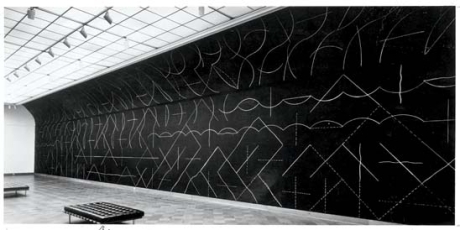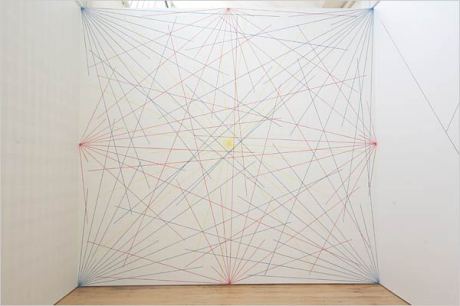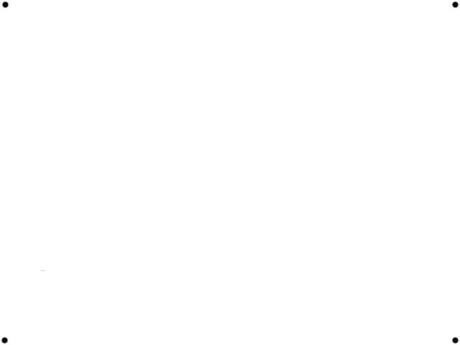Conversations Between Miles Davis and Chick Corea
January 27, 2009
The Surreal Undermining the Real
“[The trumpet] sounds human. It sounds like a voice. Sometimes I can get it to sound like a… another voice.” – Miles Davis (60 Minutes Interview)
Some of you might find this five part youtube series of Miles playing live with Wayne Shorter, Jack De Johnette, Chick Corea and Dave Holland fairly interesting. I particularly like the exchanges between Chick (on Keys) and Miles, beginning about halfway through 3 of 6. They are speaking to each other in notes, but mostly phrases. The conversations begin with an exchange of some notes, maybe roughly equivilant to a greeting – meeting each other in a harmony, where the mutual compassion for one another is asking “where are you?”, rather than “how are you?” The location of Chick and Miles in the soundscape is a compassionate, humble questioning. The development of conversation becomes a transcendence of Miles from himself, and Chick from himself, where these spatial entities become distinct from the person Blowing, or tapping out the notes. It is “another voice”, that is not Miles’ nor Chick’s, but an evolving conversation spawing from the asking of “where are you?” to the exchange of phrases that develop into a textural, colorful, spatial conversation of the textural, colorful, spatial play itself. They leave thier bodies, not to enter the others body, but to enter the dissonances and resonances of their creative soundscape, where the self, nor the body can seem to reach the complexity of the creative soundscape. In other words, it could be said that their bodies of experience are transformed entirely into sound (texture, color, line, space). It reaches heights of soundplay where even the body is forgotten. It reminds me of a quote by Einstein where he writes, “To really live, is to live outside of oneself.” For Miles, I think, living was living outside of his body, into the body of sound.
In these recordings, there is something surreal going on that is more real than the verbal interactions of talking. The surreal displaces the real into dreamlike status. The alternate undermines the primary, where the roles are exchanged.
Material Symbols
January 25, 2009

In anything with potential, or expressed material power, it seems to me that it is the opposing dissimilarities within their context that illuminate the matter into it’s powerful expression. Whether it be printed matter – some symbols on a page, a landscape (natural or architectural), a motion picture, or a belief etc., it is the disparates of the relative matter that surge it with expressive power. Symbols on a page, only have phoenetical or conceptual meaning because of the angular and (more generally) spacial irregularities in the symbolic context itself. The “H“, made of “l” “–” and “l“, are nuetral, and powerless if isolated away from the context of “H“, or (further) “Home”, or (even further) “Homeplate is riddled with cleat marks and wet with dirt.” It becomes a mute set of symbols that are not even phoenetically powerful. However, when the “I” “–” “I” of an “H” are pieced together in a context (which it can never not be), the symbol grows in strength into an expressive entity because of the angular “disagreements”. The symbolic mind, if looked at this way, becomes a recognition of opposing forms that illuminate the symbols into expressive entities. The recognition is not in the similarites, but in the dissimilarities. We read and interpret through the spatial variations of oppositions in the material. The perception of where these oppositions are, spatially, I think, give bias its relative character. The normative (rule-following) mind is hinged on the “inner eye” seeing this material, spatial play. The normative mind is following spatial rules, seen by the eyes. The symbolic structure of a letter, word, sentence, paragraph, chapter, book, desk, room etc., is only recognizable by the rule-following mind because of the depth perception of the eyes. The symbols only become rules to follow after the perception of the the spatial play of the symbols through the eyes perception of opposition. Or, in other words, the oppositions percieved by the eyes give form content. The content is then interprested and evaluated by the mediator of the normative.
To speculate, I imagine the material symbols come from a type of synesthesia of seeing the sounds, and then representing the sounds as sights. A backwards logic is used when then translating the sights of symbols into sounds and images, respectively. Reading (interpreting and evaluating through the normative) is a spiraling process that is set into motion by the consistent reversals of translating sounds to symbols and back again. It is a material process that rotates on an axis of depth perception.
Speculation aside, and propositionally focused – perceptual opposition in matter gives symbols their expressive power.
Apples or Oranges?
January 24, 2009

A Conversation Between a Friend and I
January 23, 2009
I Wrote: Yes.
Anonymous wrote: When it comes to humankind’s descriptive enterprises, which are inherently normative, when we encounter paradox, we sort through different scenarios and try our best to determine its origins. To the extent we cannot determine whether any given knowledge advance is being thwarted by, on one hand, methodological constraints, or on the other, some type of in-principle occulting, the proper bias is to assume the former and eschew the latter.
I Wrote: Yeah. I agree. Ultimately, for now at least, aesthetic paradoxes are my interest. When our rule-following (normative) methodologies fail to resolve a paradoxical conflict, another approah is necessary, I think. Where I’ve found it, is in revising the constraints of a logical containment, by either adding or subtracting something within the category, (say optics and perspective for instance) where upon extraction or immersion (subtraction/addition) the bounds of the containment shifts. This is a normative approach to a problematic paradox. But, interestingly, aesthetically, after the act of manifesting an extrapolated re-arranged logical containment – bringing it to it’s manifested end as a sculpture, painting drawing film, mixed media etc. – it becomes a metaphor that temporarily lifts, if only to a degree, the normative (rule-following) mind, and allows the senses to enhance to a new degree of feeling alive. It is an unconventional language (the art I’m speaking of) that is expressive rather than normative. It is a way of manipulating matter into an expressive entity that surges into the glass body of experience, where the normative is undermined by the power of its expression. To percieve a paradox, or paradoxes is to feel them with the body.
Anonymous wrote: This is simply a pragmatic approach wherein methods will generally precede systems. Our methods will necessarily assume such things as common sense notions of causation, reality’s intelligibility, certain first principles like identity, noncontradiction and excluded middle, such principles alternately holding or folding in a semantical vagueness that flows naturally from the ontological and epistemic vagueness we ordinarily encounter in reality. Ontological vagueness means we change our modal ontology from the possible, actual and necessary to the possible, actual and probable. Epistemic vagueness is when we don’t know if we are constrained methodologically or ontologically (the in-principle occulting I mentioned above).
I Wrote: I think we might be in disagreement here. It may just be a misunderstanding of your termonology, or rather a disagreement with it. I don’t think ontology is a logical approach to reality, but rather ontology might be called an “enantientology”, or an “alogos of the experiencing body”. Now, I say this from a very scientifically uninformed perspective. Maybe I’m valueing the arts too much. It is because of these paradoxes found through normative approaches, that give merit to a revision of the means of the approach and the end…
Anonymous wrote: Even if reality writ large remains incomprehensible, it is also still apprehensible, which is to say intelligible, lending itself to varying degrees of modeling power. Anyone who wants to enhance this modeling power must accept the onus of cashing out their novel methods in practical value-realizations.
I Wrote: Yes. It lends itself to varying degrees of modeling power. The practical value-realizations need to be re-valued. Is this just another way of saying, “methodological constraints need to be changed”? Or am I missing something here?
Anonymous wrote: All things being equal, once we’ve exhausted our best descriptive and normative approaches to reality, we remain immersed in paradox vis a vis reality’s intial conditions, boundaries and limits, or with what might be called its primal origin, primal support, primal being, primal goal and primal axioms. This gives rise to different sets of paradoxes, beyond mere godelian-like constraints, that we sometimes try to resolve through a coincidentia oppositorum, sometimes by nurturing tensions creatively, sometimes resolving them dialectically in syntheses, sometimes dissolving them through paradigm shifts, sometimes side-stepping them due to our lack of interest or due to their triviality, or what have you.
I Wrote: I agree with my emboldenments of your words here. However, I think the dialectical doesn’t always resolve itself into a synthesis. Sure, there are convergences in a dialectic, but I think leaving (some) dialectics as disparate entities that are opposed to each other, might benefit the advancement of sensationally experiencing the complex texture (to use your own eloquent description) of reality. For instance, a dialectic between experience and a logically exptrapolated field (like optics), while remaining (for the most part) disparate, incompatable entities, inform one another. The thrusting spirit of the logical extrapolations, and manifestations is , I think, to progress experience away from our tentative normative, biased (evaluative) appraoches to reality.
Anonymous wrote: Still, this immersion in paradox has deep significance for certain of our evaluative concerns, such ultimate concerns having profound existential import for very urgent and most insistent human yearnings and longings. The interpretive stances that then result from this dance between our descriptive, normative and evaluative approaches, for many people, take on the attributes so well described by William James as representing options that are vital, forced and live.
I Wrote: That’s a great way to put it. I particularly like “vital, forced, and live”. What would happen if we ended this (maybe futile) attempt at synthesizing these dialectical relationships, in a practical way… and left the descriptive, normative, and evaluative approaches seperate from the “side” of the body of experience – the alogos of experience?
Anonymous wrote: It is in the going beyond our descriptive and normative value-realizations to a more robust interpretive approach, then, that I can affirm at least some of what I think you are recommending, Rise, as best I can understand your thrust… We can also recall Whitehead saying that creative advance, in fact, takes place only along the borders of chaos.
I Wrote: You understand it very well, and you articulated it nicely. Creative advancement, I would say, is beyond the borders of rationallity.
Anonymous wrote: Not all of our interactions with reality are formal and can be rendered through formal construction.
I Wrote: There we have it, folks. This is the value of my current project. Right here, in this succinct sentence contains a bounty of reasons to do what I’m doing, which is to create, beyond our normative biases.
Anonymous wrote: To be more explicit, I was pretty much implicitly rejecting any application of your critique to humankind’s normative and descriptive endeavors. To be more plain, I have no serious quarrels with the disciplines of philosophy and science vis a vis how far they have come and where they now stand, here, on the threshold of a new millennium. At the same time, I do see value in your approach for aesthetics, as a normative science, and also for humankind’s interpretive endeavors, broadly conceived, to include all the great traditions, both religious and ideological, as we all attempt to tie our normative, descriptive and evaluative stances together, somehow.
I Wrote: Ok. I understand your position. I also agree with you that Scientific and philosophical endeavors are of great merit. In the OP, this didn’t seem like the case, but now (about a month later) I have come to some vast changes in thought…
Anonymous wrote: Let me issue a cautionary note here. When we say beyond rationality and speak of the transrational, we are recognizing that, in addition to the empirical, logical, practical and prudential, there are also nonrational and relational aspects to human value-realizations; and it is only because we are finite and fallible that we must necessarily fallback on what are weaker truth-indicative signs (like symmetry, parsimony and usefulness, for example) and cannot otherwise rely solely on the more robustly truth-conducive operations like empirical observation and logical demonstration. We must first exhaust our best truth-conducive efforts before relying on truth-indicative signs (as fallible tie-breakers); and we must keep all of these modeling power attempts very integrally related even as we respect the autonomy of their different methodologies.
I Wrote: I think you’re misunderstanding me, about my views on art and aesthetics. The arational is only used as a method to manipulate matter into an expressive entity. The arational is a pre-sculptural (pre-material) generator for the artist. These generators may come from epistemic notions, fields such as linguistics, semiotics, optics, perspective, history, Physics etc., and then they are either added to, or subtracted from, making thier rationality, arational. This, however, is only a generative method to make an expressive physical entity. The result of this expressive entity, in some art, is an experience where one loses thier interpretive mind briefly, and to a degree. Now, this is most certainly not all art. For instance, an irrational addition or subtraction of a field in physics might not lend itself to an expressive piece that allows the senses to undermine the mind.
Anonymous wrote: What I am describing as different aspects of a singular mode and/or act of knowing, he seems to describe as different modes of knowing. He seems to affirm, then, different epistemologies as equally efficacious routes to engaging reality. In my view, epistemology is epistemology is epistemology and we do not approach reality by filling our epistemic platters from a smorgasboard of autonomous modes of engagement. That is not transrational. It is, rather, an arational, gnosticism.
I Wrote: I’m not sure if I understand you here. I cannot decipher the difference in your post between “transrational” and “arational”. Maybe you can explain, if you have the time. Also, take into consideration the “additive” or “subtractive” (whatever term you want to denote to it) in reference to the generation of expressive physical entities, which are then manifested and susceptible to the “entropies” of normative evaluation. Just look at all the “untitled pieces” of post-modern art…
Anonymous wrote: Like I said, I’m actually good with your approach as an aesthetic methodology and even to broaden our interpretive horizons. I am saying that it otherwise lacks the same normative impetus for other types of value-realizations, like science, for example
The Symbolic mind Pushed Into the Body
January 22, 2009
or, Symbolic Agoraphobia

Numbered Sequences and/or Symbolic Patterns
January 22, 2009
Sol le witt, Body

A numbered sequence, or a symbolic pattern:
Symbolic pattern:
00000
00001
00010
00100
01000
10001
00011
00110
01100
11001
10011
00111
01110
11101
11011
10111
01111
11111
11112
11122
…
99999
99991
99919
99199
91999
19991
99911
99119
91199
11999
19991
99111
91119
11191
11911
19111
91111
11111 [end]
11110 [reset]
or…
Numbered sequence:
99999
999910
999109
991099
910999
1099910
9991010
9910109
9101099
1010999
1099910
99101010
91010109
101010910
101091010
109101010
910101010
1010101010
1010101012 ad infinitum
What I find interesting here, is that if one just looks at it as an abstract, symbolic pattern of shapes, rather than numbers denoting a quantity, it has an end, or a reset. While if one reads into the “concepts” the numbers contain (quantities), it becomes an infinite series. Symbols, depending on how you read them and/or look at them, will inform the bounded-rules you set on the logic you attempt to extrapolate the set(s) of symbols to thier end. Considering Sol Le Wit’s work, I find that this freedom of setting logical limits on symbols is what informs culture, and/or brings them to thier senses. The artist, in this way, is a highly creative logistician.
Sol Le Witt drawing

